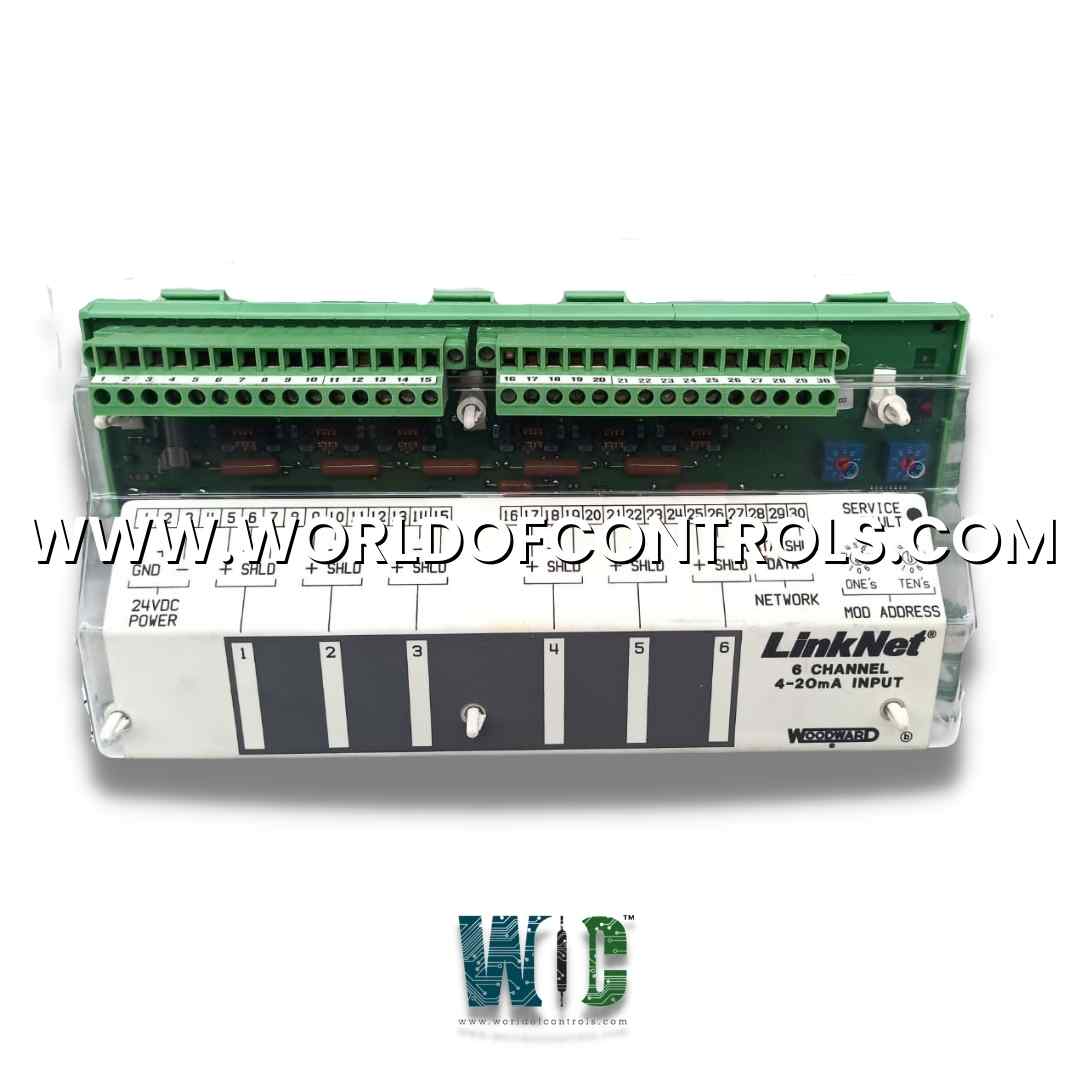
World Of Controls understands the criticality of your requirement and works towards reducing the lead time as much as possible.
9905-968 - Linknet 6 Channel Analog Input Module (4-20mA) is available in stock which ships the same day.
9905-968 - Linknet 6 Channel Analog Input Module (4-20mA) comes in UNUSED as well as REBUILT condition.
To avail our best deals for 9905-968 - Linknet 6 Channel Analog Input Module (4-20mA), contact us and we will get back to you within 24 hours.
SPECIFICATIONS:
Part Number: 9905-968
Manufacturer: Woodward
Product Type: Channel Analog Input Module
Dimension: 16cm*16cm*12cm
Repair: 3-7 Day
Availability: In Stock
Weight: 1.82 kg
Country of Origin: United States
FUNCTIONAL DESCRIPTION:
9905-968 is a Linknet 6-Channel Analog Input Module (4-20mA) manufactured and designed by Woodward and used in Gas Turbine Control Systems. A channel analog input module is an important component in turbine control systems. It is used to measure and process analog signals from various sensors and transducers, such as temperature sensors, pressure sensors, and position sensors, which are installed on the turbine or its associated equipment. The analog input module is responsible for converting the analog signals from the sensors into digital signals that can be processed by the control system. It also provides signal conditioning and amplification to ensure accurate and reliable measurements. The module typically has multiple channels, allowing it to handle multiple sensors simultaneously.
FEATURES:
The features of a channel analog input module in a turbine control system may vary depending on the specific requirements of the system, but here are some common features:
Multiple Channels: The module typically has multiple channels to support the measurement of signals from various sensors and transducers.
Signal Conditioning: The module includes signal conditioning circuitry to filter, amplify, and scale the signals from the sensors, ensuring accurate and reliable measurements.
High Accuracy: The module is designed to provide high-accuracy measurements, even in harsh environments with high levels of electrical noise and interference.
Fast Sampling Rate: The module has a fast sampling rate, enabling it to provide real-time data to the control system, allowing for rapid adjustments to the operation of the turbine.
Wide Measurement Range: The module supports a wide range of measurement inputs, including voltage, current, resistance, and thermocouples, allowing it to handle various types of sensors.
WOC has the largest stock of Woodward Gas Turbine Control System Replacement Parts. We can also repair your faulty boards. We can also supply unused and rebuilt backed-up with a warranty. Our team of experts is available round the clock to support your OEM needs. Our team of experts at WOC is happy to assist you with any of your automation requirements. For pricing and availability on any parts and repairs, kindly get in touch with our team by phone or email.
FREQUENTLY ASKED QUESTIONS:
What is the purpose of a channel analog input module in a turbine control system?
The channel analog input module is used to measure and process analog signals from various sensors and transducers installed on the turbine or its associated equipment. It converts analog signals into digital signals that can be processed by the control system and provides signal conditioning and amplification to ensure accurate and reliable measurements.
How many channels does a typical channel analog input module have?
The number of channels in a channel analog input module may vary depending on the specific requirements of the turbine control system. Some modules have just a few channels, while others may have dozens of channels.
What types of sensors and transducers can be connected to a channel analog input module?
The module can typically handle various types of sensors and transducers, such as temperature sensors, pressure sensors, and position sensors. It supports a wide range of measurement inputs, including voltage, current, resistance, and thermocouples.